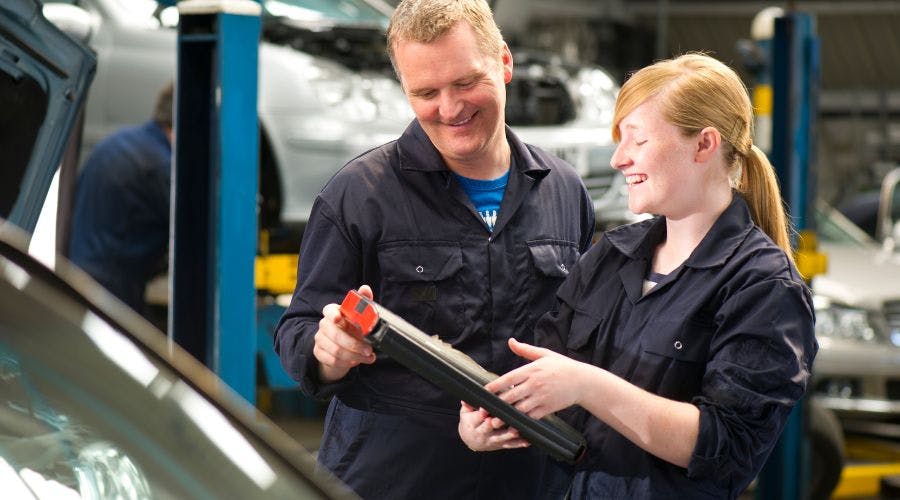Get an Apprenticeship – The Five Most Asked Questions

Embarking on the path to a rewarding career often begins with the right questions, and when it comes to apprenticeships, there's no shortage of enquiries.
As a bridge between education and employment, apprenticeships offer a unique blend of hands-on training and academic learning, making them an attractive option for many.
With various options and pathways available, it's natural to have questions. In this blog post, we delve into the five most frequently asked questions about apprenticeships.
1. Am I Eligible for an Apprenticeship?
To start an apprenticeship or traineeship in Australia, you simply need to be of working age and an Australian citizen or permanent resident (or a New Zealand citizen with an eligible work visa).
You do not need a previous qualification to undertake an apprenticeship or traineeship, but completing a pre-vocational qualification (such as a Certificate II in Engineering Pathways) while at school will be sought after by employers.
Experience such as working as a trade assistant will also be an advantage.
2. Will I be Qualified When I Finish?
Yes. An apprenticeship involves gaining practical, hands-on work experience and also completing a nationally accredited Vocational qualification in the trade of your choosing (e.g. Certificate III in Engineering - Mechanical Trade).
This grants you the status of a fully qualified tradesperson upon completion.
A trainee will usually work toward a Certificate III or higher, typically (but not always) in non-trade pathways, such as business administration, warehousing, IT or retail.
There are a number of trade traineeships available, such as a Civil Construction Traineeship.
3. Does it Cost Anything to do an Apprenticeship?
No, not usually. There are course fees associated with completing the “off-the-job” training (Vocational qualification) required as part of a traineeship or apprenticeship. These fees are generally subsidised by User Choice funding for Australian Apprenticeships or covered by employer or the modern award set by the Fair Work Commission.
Apprentice and trainee employers such as MIGAS also provide uniforms and personal protective equipment as part of your employment.
There may be some costs around getting yourself to and from work or training.
4. How Much do Apprentices Earn?
Apprentices are typically paid under a relevant award rate or under agreement with their employer, which means it’s not as simple as stating a figure or dollar amount. Some employers also choose to pay above award rates, or under an EBA.
The Australian Fair Work Awards cover:
- Base rates of pay (including piecework rates)
- Types of employment (e.g. full-time, part-time, casual)
- Overtime and penalty rates
- Work arrangements (e.g. rosters, variations to working hours)
- Annualised wage or salary arrangements
- Allowances (e.g. travel allowances)
- Leave, leave loading and taking leave
- Superannuation
- Procedures for consultation, representation and dispute settlement
- Outworkers
- An industry-specific redundancy scheme.
Apprentices typically move up to the next level of pay as they progress through their apprenticeship which usually take around four years to complete, and one to three years for a traineeship.
The Fair Work Ombudsman sets out a range of entitlements for Australian Apprentices. The government's P.A.C.T Pay Calculator allows you to calculate an estimate of your pay based on the relevant award.
Apprentices can also access financial support through an Australian Apprenticeship Support Loan (formerly called a Trade Support Loan) and a range of other programs that vary state to state:
- Living Away from Home Allowance
- Travel and Accommodated Allowances
- Youth Allowance, Austudy and ABSTUDY
- Discounted Health Care and Travel allowances
Certain qualifications have been identified as priority trades by the government, which attract additional support payments. New energy apprentices can also receive support payments for 'green' trades. These are both identified on the Australian Apprenticeship Priority List.
Further reading:
5. How do I Start an Apprenticeship?
Securing an apprenticeship or traineeship is just like applying for a job. That means you’ll need an up to date resume which includes details of your work experience (paid and/or volunteer), education and skills.
Fresh out of school and haven’t gained any work experience yet? That’s ok! School leavers are sought-after by employers looking for apprentices.
Include the subjects you did at school and any awards or community programs you took part in. A reference from a supportive teacher or school leader will also help.
Australian Apprenticeships are not only for school leavers, however. Mature-age or adult apprenticeships are also available for anyone aged 21 or over, and many employers seek out candidates with more work and life experience.
Head over to our Jobs Board to search for current vacancies and apply online.
You'll also find more information in our Frequently Asked Questions and How Apprenticeships Work overview.